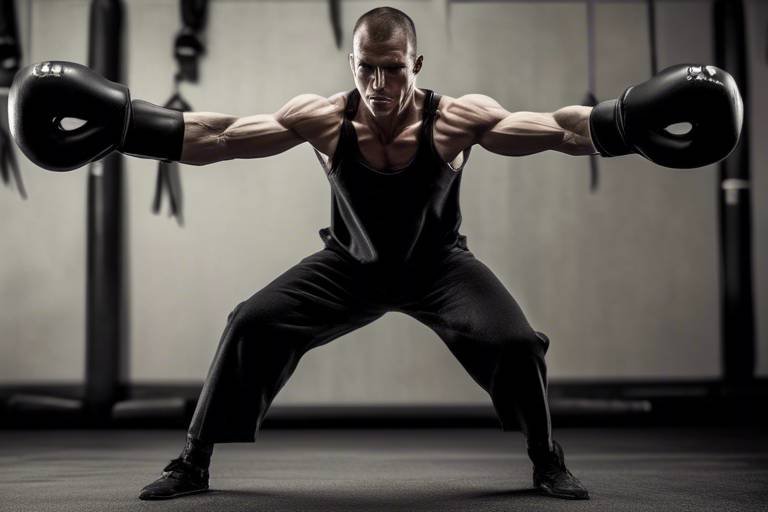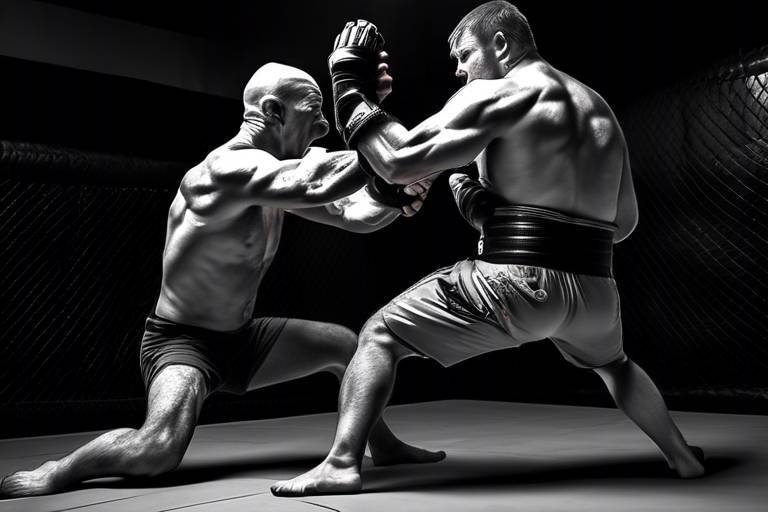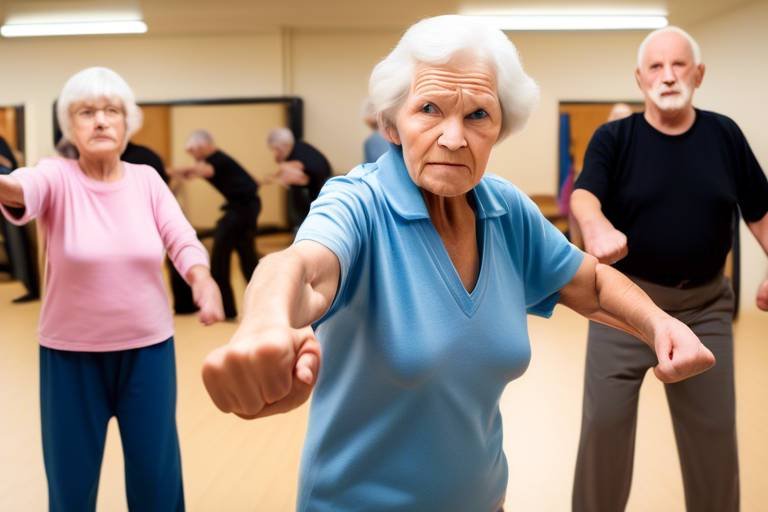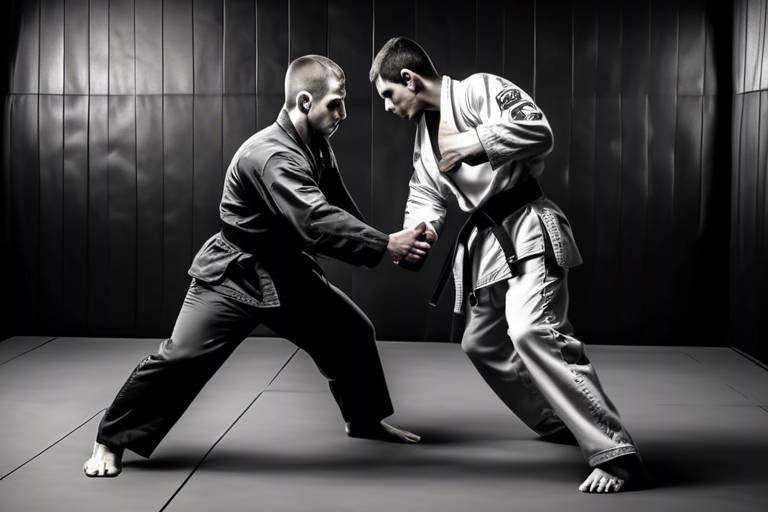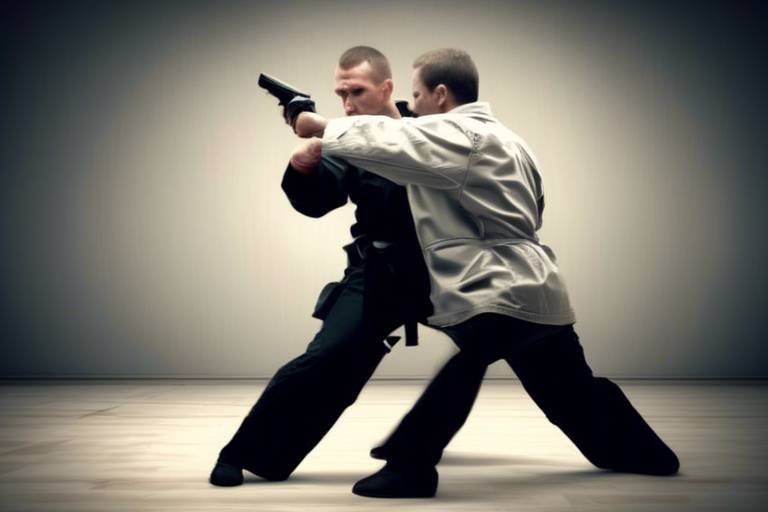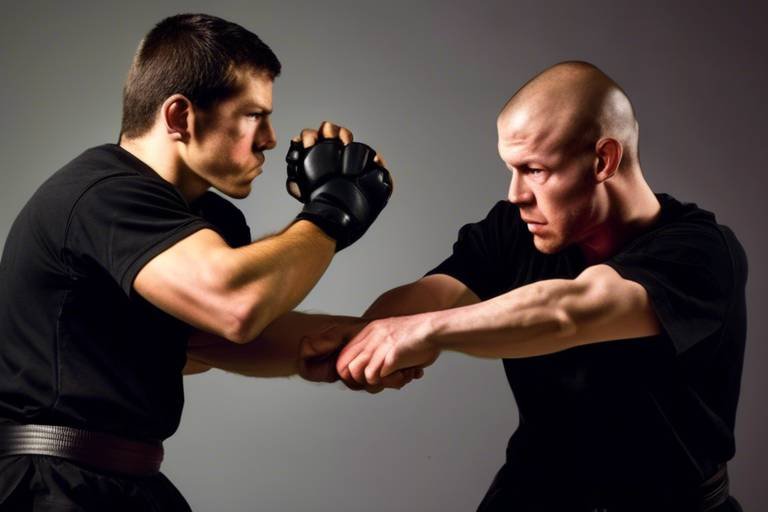How to Maximize Your Physical Strength in Self-Defense Techniques?
In today's world, the ability to defend oneself is not just a luxury; it's a necessity. But have you ever wondered what the key ingredient is to effective self-defense? It's not just about knowing the moves or having the right technique; it's about having the physical strength to execute those techniques effectively. In this article, we will explore various methods to enhance your physical strength specifically for self-defense. From training regimes to nutritional strategies and mental fortitude, we’ll cover everything you need to know to boost your capabilities and confidence when it comes to self-defense.
Physical strength plays a crucial role in self-defense, acting as the backbone of your ability to protect yourself. Imagine being in a situation where you need to fend off an attacker. Your strength can make the difference between successfully escaping and becoming a victim. Not only does strength enhance your ability to deliver powerful strikes, but it also provides you with the stamina to endure a confrontation. In self-defense scenarios, having an advantage in strength can mean the difference between winning or losing, especially when faced with an assailant who may be larger or more aggressive. Therefore, understanding the importance of physical strength is the first step in maximizing your self-defense techniques.
Implementing a structured strength training program is essential for anyone serious about self-defense. A well-rounded regimen will not only build muscle but also improve your overall functional fitness. This means you’ll be better prepared for the unpredictable nature of self-defense situations. Here are some effective exercises and routines that can significantly enhance your physical capabilities:
Bodyweight exercises are highly effective for building strength without the need for expensive equipment. They can be done anywhere, making them a convenient option for anyone looking to enhance their self-defense skills. Some key bodyweight movements that improve functional strength relevant to self-defense situations include:
Push-ups and pull-ups are foundational exercises that build upper body strength. They are essential for enhancing your ability to push away or pull an attacker. Push-ups primarily target your chest, shoulders, and triceps, while pull-ups strengthen your back and biceps. Incorporating these exercises into your routine will develop the muscle groups you need for effective self-defense maneuvers.
Squats and lunges are vital for lower body strength. These exercises not only build muscle but also improve balance and stability, which are crucial for effective self-defense maneuvers. When you squat or lunge, you engage your core, legs, and glutes, creating a strong foundation for any physical action you may need to take. By regularly practicing these movements, you will enhance your ability to react quickly and maintain your footing during a confrontation.
Resistance training can further enhance your physical strength. Utilizing weights and resistance bands can significantly develop muscle power, making you more formidable in self-defense scenarios. This type of training focuses on progressive overload, which means gradually increasing the weight or resistance to challenge your muscles. Not only does this build strength, but it also improves your endurance, allowing you to maintain energy during prolonged encounters.
Proper nutrition is key to maximizing strength. What you put into your body directly affects your performance and recovery. Eating a balanced diet rich in proteins, carbohydrates, and healthy fats will provide the necessary fuel for your training and overall physical performance in self-defense. Additionally, understanding which nutrients promote muscle growth is critical. For instance, protein is essential for muscle repair and growth, while carbohydrates provide the energy needed for intense workouts.
To support your strength training, consider incorporating the following essential nutrients into your diet:
- Protein: Found in lean meats, fish, dairy, and legumes.
- Healthy Fats: Sources include avocados, nuts, and olive oil.
- Vitamins and Minerals: Foods rich in vitamins C and D, calcium, and magnesium are crucial for recovery.
Staying hydrated is vital for optimal performance. Dehydration can lead to fatigue, reduced strength, and impaired coordination—none of which are desirable when it comes to self-defense. Aim to drink plenty of water throughout the day, especially before and after workouts. A well-hydrated body performs better, allowing you to train harder and recover faster.
Mental fortitude is as important as physical strength. In self-defense, your mindset can greatly influence your performance. Techniques like visualization and mindfulness can enhance your self-defense capabilities by preparing your mind for potential scenarios. Imagine being in a high-pressure situation; being mentally prepared can make all the difference.
Visualization techniques can boost confidence and performance. By mentally rehearsing self-defense scenarios, you can prepare yourself for real-life situations. This practice not only helps you familiarize yourself with the techniques but also reduces anxiety during actual confrontations. Picture yourself successfully defending against an attack, and you’ll find that your body is more likely to follow through.
Confidence plays a significant role in self-defense effectiveness. If you believe in your abilities, you’re more likely to react decisively in a crisis. Building mental resilience can be achieved through positive affirmations, mindfulness practices, and consistent training. Remember, the more prepared you feel, the stronger you’ll be when the moment counts.
Q: How often should I train to maximize my physical strength for self-defense?
A: Ideally, aim for at least three to four days of strength training per week, combined with cardio and flexibility exercises.
Q: What is the best diet for building strength?
A: A balanced diet rich in protein, healthy fats, and complex carbohydrates is essential for muscle growth and recovery.
Q: Can I improve my self-defense skills without a gym?
A: Absolutely! Bodyweight exercises and outdoor workouts can be just as effective in building strength and endurance.

Understanding the Importance of Physical Strength
When it comes to self-defense, physical strength is not just a bonus; it's a necessity. Imagine being in a situation where your safety is at stake. Having the ability to physically defend yourself can make all the difference. Strength enhances your ability to react quickly and effectively, allowing you to fend off an attacker or escape a dangerous situation. It’s not just about brute force; it’s about control, balance, and the ability to use your body as a powerful tool.
In various self-defense scenarios, physical strength offers several advantages. For instance, if you find yourself in a confrontation, being stronger can help you:
- Push away an assailant: The ability to generate force can create the necessary distance between you and a threat.
- Hold your ground: In a grappling situation, strength can be the deciding factor in maintaining your position and control.
- Escape quickly: A strong physique can help you break free from holds or grips.
Moreover, strength contributes to your overall confidence. Knowing that you have the physical capability to defend yourself can significantly reduce anxiety in threatening situations. This mental edge is crucial because self-defense is as much about psychological readiness as it is about physical prowess. It’s like having an invisible shield; when you know you can protect yourself, you carry yourself differently—more assertively, more confidently.
Additionally, consider this: in self-defense, it's not just about strength in isolation. It’s about how that strength integrates with your skills. A strong individual who lacks technique may struggle against a smaller, more skilled opponent. Therefore, strength is a vital component of a comprehensive self-defense strategy, which also includes technique, awareness, and mental preparedness. The combination of these elements creates a well-rounded defender who can handle various scenarios effectively.
In summary, physical strength is a cornerstone of effective self-defense. It enhances your ability to react, provides confidence, and integrates with your overall defensive skills. So, whether you're just starting your journey in self-defense or looking to enhance your existing skills, focusing on building your physical strength should be a top priority.

Effective Strength Training Regimens
When it comes to self-defense, having a solid strength training regimen can make all the difference. It’s not just about being big or bulky; it’s about developing functional strength that you can use effectively in real-life situations. The right training program will not only enhance your physical capabilities but also boost your confidence, allowing you to handle potentially dangerous situations with greater ease. So, what does an effective strength training regimen look like? Let’s dive in!
First and foremost, it’s essential to incorporate a variety of exercises that target different muscle groups. This approach not only prevents plateaus but also ensures that you develop a balanced physique. You want to engage both your upper and lower body, as well as your core, since self-defense often requires explosive movements that utilize multiple muscle groups simultaneously.
One of the most effective ways to build strength is through progressive overload. This means gradually increasing the weight, frequency, or number of repetitions in your training. By doing so, you continuously challenge your muscles, prompting them to adapt and grow stronger. For example, you might start with a certain weight for your squats and, as you become more comfortable, incrementally add more weight each week. This method is crucial for long-term strength gains.
In addition to traditional weightlifting, incorporating bodyweight exercises into your regimen is invaluable. These exercises not only improve strength but also enhance your balance and coordination, which are vital during self-defense scenarios. Think about push-ups, pull-ups, squats, and lunges. Each of these movements can be modified to increase difficulty, making them suitable for all fitness levels.
| Day | Exercise | Sets | Reps |
|---|---|---|---|
| Monday | Push-Ups | 3 | 10-15 |
| Monday | Pull-Ups | 3 | 8-10 |
| Wednesday | Squats | 4 | 12-15 |
| Wednesday | Lunges | 4 | 10-12 (each leg) |
| Friday | Deadlifts | 3 | 8-10 |
| Friday | Bench Press | 3 | 8-10 |
Don't forget to include core exercises in your routine. A strong core enhances your stability and balance, which are crucial for executing self-defense techniques effectively. Planks, Russian twists, and leg raises are fantastic options that can be incorporated into your training. Aim to perform core exercises at least twice a week to reap the benefits.
Moreover, consider adding resistance training with bands or weights. Resistance bands, for example, are a fantastic tool for enhancing strength without the need for heavy equipment. They allow for a full range of motion and can be used to target specific muscle groups effectively. You can perform exercises like banded squats, chest presses, and rows to build strength that translates directly to self-defense.
Lastly, remember that consistency is key! It’s better to train regularly with moderate intensity than to go all out sporadically. Establish a routine that fits your lifestyle, and stick to it. Before you know it, you’ll be feeling stronger, more confident, and ready to face any challenge that comes your way!
- How often should I train for self-defense? Aim for at least three times a week, focusing on both strength and technique.
- Can I build strength without weights? Absolutely! Bodyweight exercises can be very effective for building functional strength.
- What should I eat to support my training? Focus on a balanced diet rich in protein, healthy fats, and carbohydrates to fuel your workouts.

Bodyweight Exercises for Self-Defense
When it comes to self-defense, having **functional strength** is essential, and one of the best ways to achieve this is through bodyweight exercises. These exercises not only build strength but also improve your **balance**, **flexibility**, and **endurance**—all of which are crucial when you find yourself in a self-defense situation. Plus, the great thing about bodyweight exercises is that you can do them anywhere, whether at home, in the park, or even in a hotel room while traveling. No fancy equipment is needed, just your body and a bit of determination!
Let’s dive into some key bodyweight exercises that can significantly enhance your physical capabilities for self-defense:
- Push-Ups: This classic exercise targets your chest, shoulders, and triceps, building upper body strength essential for pushing away an attacker. Start with a few sets of 10-15 reps, and as you get stronger, increase the number of repetitions or try variations like diamond push-ups or decline push-ups.
- Pull-Ups: If you have access to a pull-up bar, this exercise is fantastic for developing back and arm strength. Pull-ups help you learn to pull your body weight up, which can be critical if you need to escape or maneuver away from a threat. Aim for 3-5 sets of as many reps as you can manage.
- Squats: Squats are vital for building lower body strength, which is crucial for maintaining balance during a confrontation. They also help you develop explosive power, allowing you to react quickly. Start with bodyweight squats and work your way up to jump squats for added intensity.
- Lunges: Lunges not only strengthen your legs but also improve your stability and coordination. Incorporate forward, reverse, and lateral lunges into your routine to engage different muscle groups and enhance your agility. Try doing 10-12 lunges on each leg for a solid workout.
Incorporating these exercises into your training routine can lead to **significant improvements** in your physical strength and overall fitness level. Aim to perform these exercises at least three times a week, gradually increasing the intensity and volume as you progress. Remember, it's not just about lifting weights; it's about using your body effectively to defend yourself when it matters most.
As you train, focus on maintaining proper form. Quality over quantity is key! An effective workout is not just about how many push-ups you can do; it’s about how well you can execute each movement. This attention to detail will ensure that you develop strength that is not only impressive but also functional and applicable in real-world scenarios.
Lastly, don’t forget to mix up your routine. Your body adapts quickly, and introducing new exercises or variations can keep your workouts exciting and challenging. Consider adding in some plyometric movements, like burpees, to elevate your heart rate and build explosive strength. The goal is to make your body a **powerful tool** for self-defense, ready to respond effectively in any situation.
Q: How often should I do bodyweight exercises for self-defense?
A: Ideally, aim for at least three times a week. Consistency is key to building strength and endurance.
Q: Can bodyweight exercises alone be enough for self-defense?
A: Yes, bodyweight exercises can provide a solid foundation for strength, but combining them with other training methods, such as martial arts or self-defense classes, can enhance your skills further.
Q: What if I can't do a pull-up yet?
A: If pull-ups are challenging, start with assisted pull-ups or negative pull-ups, where you focus on lowering yourself down slowly. This will help build the necessary strength over time.

Push-Ups and Pull-Ups
When it comes to building upper body strength for self-defense, push-ups and pull-ups are two of the most effective exercises you can incorporate into your routine. These bodyweight exercises not only require no special equipment, making them accessible for anyone, but they also engage multiple muscle groups, enhancing your overall strength and functional fitness. Think of push-ups as your go-to exercise for pushing away an attacker, while pull-ups are crucial for pulling yourself up or even pulling an assailant off balance.
Push-ups are fantastic for developing the chest, shoulders, and triceps, while also engaging your core for stability. A strong core is essential in self-defense, as it helps maintain balance and control during confrontations. To perform a standard push-up, simply place your hands shoulder-width apart on the ground, extend your legs back, and lower your body until your chest nearly touches the floor. Then, push back up to the starting position. If you're looking for a challenge, you can try variations like diamond push-ups or decline push-ups to target different muscle groups.
On the other hand, pull-ups primarily work the back, biceps, and shoulders, making them a powerhouse exercise for upper body strength. They help you develop the pulling strength necessary for grappling situations or when you need to hoist yourself up in a tight spot. To execute a pull-up, hang from a bar with your palms facing away from you, pull your body upwards until your chin is above the bar, and then lower yourself back down. If you're not yet able to perform a full pull-up, consider starting with assisted pull-ups using a resistance band or performing negative pull-ups, where you focus on the lowering phase.
Incorporating these exercises into your training regimen can lead to significant improvements in your physical capabilities. To help you track your progress and keep your workouts engaging, consider creating a simple table like the one below:
| Exercise | Sets | Reps | Notes |
|---|---|---|---|
| Push-Ups | 3 | 10-15 | Focus on form; try variations for extra challenge. |
| Pull-Ups | 3 | 5-10 | Use bands for assistance if needed. |
By consistently practicing push-ups and pull-ups, you're not just building muscle; you're also enhancing your confidence in your ability to defend yourself. Remember, strength is not just about how much you can lift; it's about how effectively you can use your body in a real-world situation. So, the next time you hit the gym or your living room floor, keep these exercises in mind as part of your self-defense training strategy.
- How often should I do push-ups and pull-ups? Aim for 2-3 times a week, allowing for rest days in between to promote recovery.
- Can I do these exercises if I'm a beginner? Absolutely! Start with modified versions and gradually increase intensity as you build strength.
- What if I can't do a full pull-up yet? Use resistance bands for assistance or focus on negative pull-ups to build strength.
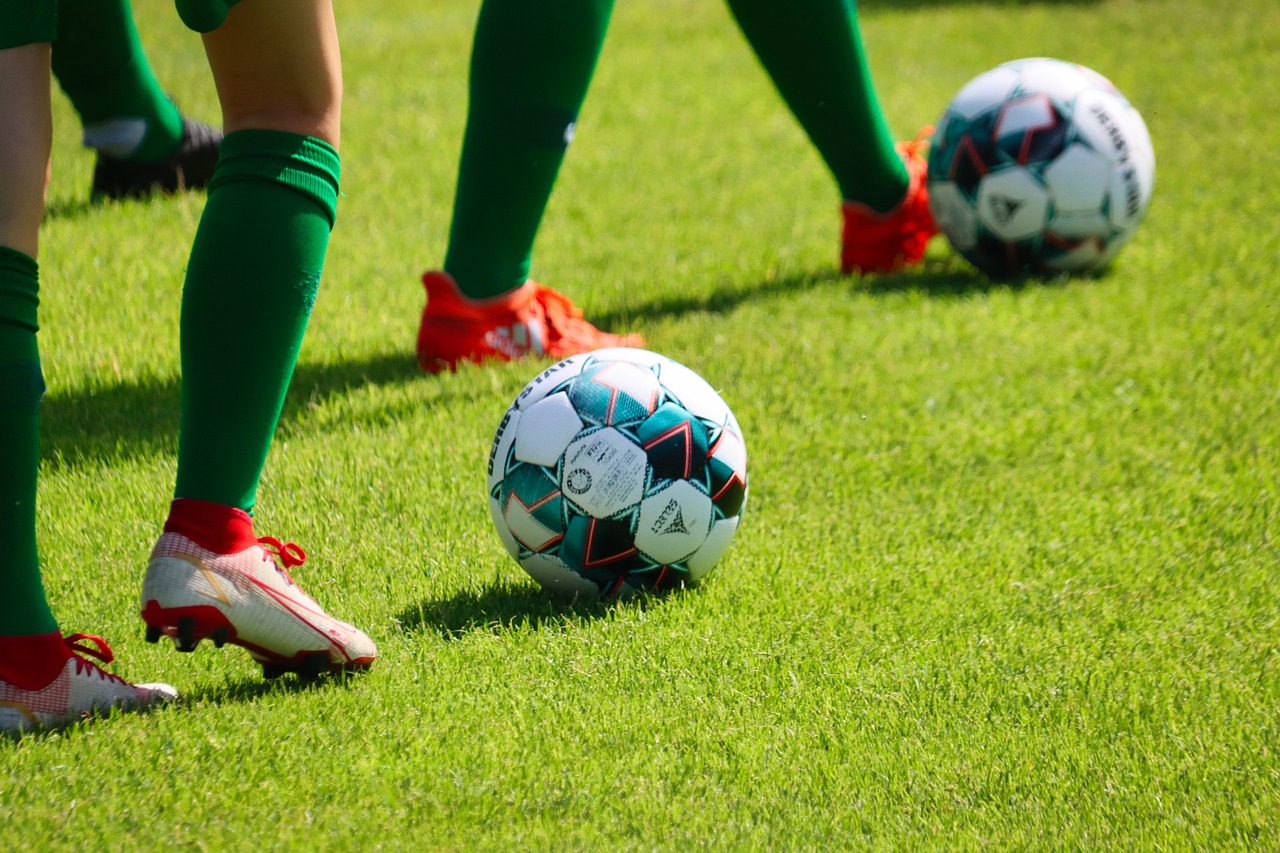
Squats and Lunges
When it comes to building lower body strength, squats and lunges are two of the most effective exercises you can incorporate into your training routine. These movements not only help in developing muscle power but also enhance your balance and stability, which are crucial elements in self-defense situations. Imagine needing to quickly evade an attack or reposition yourself to gain a tactical advantage; having strong legs is like having a sturdy foundation for a house. Without it, everything can come crashing down in an instant.
Squats primarily target the quadriceps, hamstrings, and glutes, making them essential for generating the explosive power needed to push away an attacker or sprint to safety. Meanwhile, lunges engage similar muscle groups while also improving your core stability and coordination. Think of lunges as a way to train your body to move in multiple directions, which is vital when you’re trying to escape or counter a threat.
To get the most out of these exercises, it's important to focus on proper form. A common mistake is letting your knees extend beyond your toes during squats, which can lead to injury. Instead, aim to keep your knees aligned with your ankles. For lunges, ensure your front knee does not go past your toes to avoid undue stress on your joints. Here’s a quick breakdown of how to perform each exercise:
| Exercise | Steps | Benefits |
|---|---|---|
| Squats |
|
Builds lower body strength, improves balance, and enhances core stability. |
| Lunges |
|
Enhances leg strength, improves coordination, and increases flexibility. |
Incorporating squats and lunges into your workout routine is not just about building muscle; it’s about preparing your body for real-world scenarios. Whether you're facing a potential threat or simply trying to stay fit, these exercises provide the strength and agility needed to respond effectively. So, next time you're planning your workout, remember that a strong lower body is your best ally in self-defense.

Incorporating Resistance Training
When it comes to enhancing your physical strength for self-defense, is an absolute game-changer. Think of resistance training as the secret sauce that adds the right kick to your strength-building efforts. It’s not just about lifting weights; it’s about building muscle power that can be directly applied to real-life situations. Imagine being able to push an opponent away with ease or having the strength to escape a hold. That’s the kind of confidence and capability that resistance training can provide!
Resistance training can take many forms, from traditional weightlifting with barbells and dumbbells to using resistance bands. Each method has its own unique benefits, but they all share a common goal: to increase muscle strength and endurance. For instance, using free weights allows for a greater range of motion and engages stabilizing muscles, which is crucial in self-defense scenarios where you might need to pivot or adjust quickly.
Here’s a quick breakdown of the benefits of resistance training:
- Increased Muscle Mass: More muscle means more strength, which is essential for effective self-defense.
- Improved Joint Stability: Stronger muscles support your joints, reducing the risk of injury during physical confrontations.
- Enhanced Metabolism: Muscle burns more calories than fat, helping you maintain a healthy weight and improve overall fitness.
To get started, consider creating a structured resistance training program that focuses on major muscle groups. A balanced routine might include exercises like squats, deadlifts, bench presses, and rows. It’s important to remember that form is everything. Proper technique not only maximizes effectiveness but also minimizes the risk of injury. If you’re unsure about your form, consider consulting a trainer or watching instructional videos to ensure you’re on the right track.
Additionally, resistance training doesn’t have to be a solo endeavor. Joining a community or a class can provide motivation and accountability. Picture this: you and your friends lifting weights together, pushing each other to go that extra mile. It’s not just about physical strength; it’s about building a support network that encourages you to excel.
Finally, don’t forget to incorporate rest and recovery into your training regimen. Muscles need time to repair and grow stronger after a workout. So, be sure to schedule rest days and listen to your body. After all, even the most powerful machines need downtime to function at their best!
Q: How often should I incorporate resistance training into my routine?
A: Aim for at least two to three sessions per week, allowing for recovery time between workouts.
Q: Can I do resistance training at home?
A: Absolutely! Bodyweight exercises, resistance bands, and dumbbells can all be used effectively at home.
Q: What should I focus on during resistance training for self-defense?
A: Focus on compound movements that engage multiple muscle groups, such as squats, deadlifts, and push-ups.

Nutrition for Strength Enhancement
When it comes to maximizing your physical strength for self-defense, nutrition plays a pivotal role. Think of your body as a high-performance machine; without the right fuel, it simply won't run at its best. Proper nutrition not only supports your training but also aids in recovery, ensuring that you can consistently perform at your peak. So, what does that mean for you? It means focusing on a balanced diet rich in essential nutrients that promote muscle growth and overall health.
One of the first steps in enhancing your strength through nutrition is understanding the macronutrients—proteins, carbohydrates, and fats. Each of these plays a unique role in your body:
- Proteins: These are the building blocks of muscle. Consuming adequate protein post-workout is crucial for muscle repair and growth. Aim for sources like chicken, fish, beans, and legumes.
- Carbohydrates: Often seen as the enemy in many diets, carbs are essential for providing energy. They fuel your workouts and help replenish glycogen stores after intense training sessions. Whole grains, fruits, and vegetables are excellent sources.
- Fats: Healthy fats are important for hormone production, including hormones that aid in muscle growth. Incorporate sources such as avocados, nuts, and olive oil into your meals.
In addition to macronutrients, micronutrients—vitamins and minerals—are vital for your overall performance and recovery. For instance, vitamin D and calcium are crucial for bone health, while magnesium plays a role in muscle function. A well-rounded diet should include a variety of fruits and vegetables to ensure you're getting these essential nutrients.
| Nutrient | Role | Food Sources |
|---|---|---|
| Protein | Muscle repair and growth | Chicken, fish, beans, legumes |
| Carbohydrates | Energy source | Whole grains, fruits, vegetables |
| Fats | Hormone production | Avocados, nuts, olive oil |
| Vitamin D | Bone health | Sunlight, fortified foods |
| Magnesium | Muscle function | Leafy greens, nuts, seeds |
Another critical aspect of nutrition is hydration. Staying hydrated is not just about drinking enough water; it's about maintaining the right balance of electrolytes, which are essential for muscle contractions and overall performance. Dehydration can lead to fatigue, decreased strength, and impaired recovery. Aim to drink water throughout the day, and consider electrolyte-rich drinks post-workout, especially after intense training sessions.
Finally, while whole foods should be your primary source of nutrition, supplements can also play a role in enhancing strength. Protein powders, creatine, and branched-chain amino acids (BCAAs) are popular among athletes for their potential benefits in muscle recovery and growth. However, it's important to consult with a healthcare professional before starting any supplement regimen.
In summary, to maximize your physical strength for self-defense, focus on a balanced diet rich in macronutrients and micronutrients, stay hydrated, and consider supplements if necessary. Your body will thank you, and you’ll be better prepared to handle any self-defense situation that comes your way!
Q: How important is protein for strength training?
A: Protein is crucial as it helps repair and build muscle after workouts, making it a key component of your nutrition plan.
Q: Can I rely solely on supplements for strength enhancement?
A: While supplements can aid in your training, they should not replace whole foods. A balanced diet is essential for overall health and performance.
Q: How much water should I drink daily?
A: It varies by individual, but a general guideline is to drink at least 8-10 cups of water daily, adjusting for activity level and climate.
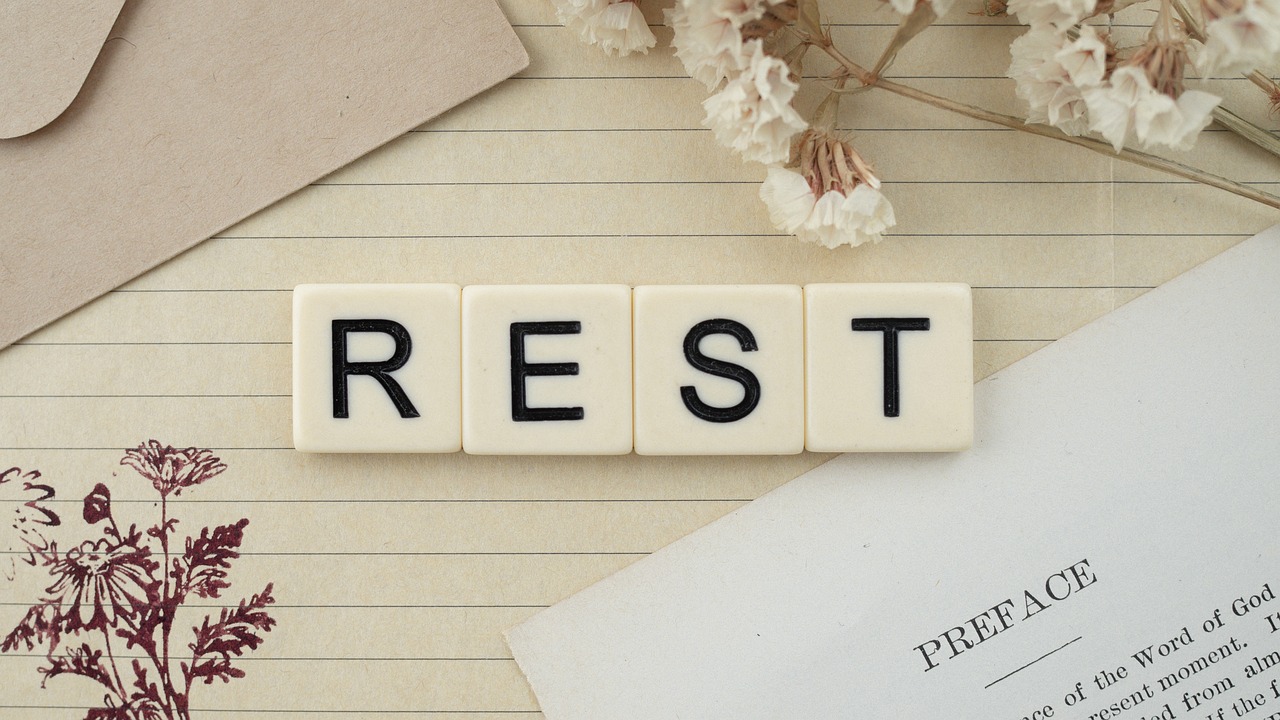
Essential Nutrients for Muscle Growth
When it comes to maximizing your physical strength for self-defense, understanding essential nutrients for muscle growth is crucial. Think of your body as a high-performance vehicle; just like a car needs the right fuel to run smoothly, your muscles require specific nutrients to grow and recover effectively. The primary players in this game of strength enhancement include proteins, carbohydrates, healthy fats, vitamins, and minerals. Each of these nutrients plays a unique role in muscle development and overall performance.
Let’s dive into the star of the show: proteins. These are the building blocks of muscle tissue. When you engage in strength training, your muscles undergo stress, leading to tiny tears. This is where protein comes in, helping to repair and build stronger muscles. Aim for a protein intake of about 1.6 to 2.2 grams per kilogram of body weight, especially post-workout. Foods rich in protein include:
- Chicken and turkey
- Fish like salmon and tuna
- Eggs and dairy products
- Legumes and beans
- Nuts and seeds
Next up are carbohydrates, often misunderstood but vital for fueling your workouts. Think of carbs as the gasoline that powers your engine. They provide the energy needed to perform high-intensity training and help replenish glycogen stores in your muscles after exercise. Opt for complex carbohydrates like whole grains, fruits, and vegetables, which release energy slowly and keep you feeling full longer.
Don't forget about healthy fats; they are essential for hormone production, including testosterone, which plays a significant role in muscle growth. Incorporate sources of healthy fats such as avocados, olive oil, and fatty fish into your diet. These fats not only support your overall health but also enhance your body’s ability to absorb vitamins.
Speaking of vitamins, let’s highlight the importance of vitamins and minerals. Nutrients like Vitamin D, calcium, and magnesium are crucial for muscle function and recovery. Vitamin D, for example, helps in calcium absorption, which is vital for muscle contraction. Foods rich in these nutrients include leafy greens, dairy products, and fortified foods.
To summarize, here’s a quick table of the essential nutrients you should focus on:
| Nutrient | Role in Muscle Growth | Food Sources |
|---|---|---|
| Protein | Builds and repairs muscle tissue | Chicken, fish, eggs, legumes |
| Carbohydrates | Provides energy for workouts | Whole grains, fruits, vegetables |
| Healthy Fats | Supports hormone production | Avocados, olive oil, nuts |
| Vitamins & Minerals | Enhances muscle function and recovery | Leafy greens, dairy, fortified foods |
In conclusion, fueling your body with the right nutrients is as important as the training itself. By ensuring you have a balanced intake of proteins, carbohydrates, healthy fats, and essential vitamins and minerals, you’ll set yourself up for success in not just building strength but also in effectively defending yourself. Remember, it’s not just about lifting weights; it’s about lifting your entire game to a new level!

Hydration and Its Impact on Performance
When it comes to maximizing your physical strength for self-defense, hydration is often overlooked, yet it plays a pivotal role in your overall performance. Imagine trying to run a marathon without sipping water; your energy would dwindle, and your muscles would cramp. Similarly, when you're engaged in self-defense training or a real-life situation, being properly hydrated can be the difference between success and failure. Water is essential for numerous bodily functions, including temperature regulation, joint lubrication, and nutrient transport. When you're dehydrated, your body struggles to perform at its peak, leading to fatigue, decreased strength, and impaired cognitive function.
Studies have shown that even a 2% drop in body weight due to dehydration can significantly impact physical performance. This means that if you weigh 150 pounds, a mere 3 pounds lost to dehydration can hinder your ability to react quickly and effectively during a self-defense scenario. To put it in perspective, think of your body as a high-performance engine; without sufficient fuel, it simply cannot operate at full capacity. Therefore, maintaining optimal hydration levels is crucial not just for your workouts, but also for your overall self-defense readiness.
So, how can you ensure you're adequately hydrated? Here are some key strategies to consider:
- Drink Water Regularly: Aim to drink water throughout the day, not just when you're thirsty. A good rule of thumb is to consume at least 8-10 cups of water daily, adjusting for your activity level.
- Monitor Your Urine Color: A simple way to gauge hydration is by checking the color of your urine. Pale yellow indicates good hydration, while darker shades suggest you need to drink more.
- Include Hydrating Foods: Foods like cucumbers, oranges, and watermelon have high water content and can contribute to your daily hydration needs.
Moreover, during intense training sessions or self-defense classes, consider using sports drinks that contain electrolytes. These drinks can help replenish lost minerals and keep your performance levels high. However, be cautious; not all sports drinks are created equal. Some contain high levels of sugar, which can lead to a quick energy spike followed by a crash. Always opt for options that provide electrolytes without excessive sugar.
In conclusion, hydration is a fundamental aspect of maximizing your physical strength for self-defense. By staying adequately hydrated, you not only improve your physical capabilities but also enhance your mental clarity and reaction time. Remember, in the heat of the moment, your body and mind need to work in harmony, and hydration is the key to achieving that balance.
Q: How much water should I drink daily?
A: Aim for at least 8-10 cups of water daily, adjusting for your activity level and climate. If you're training intensively, you may need more.
Q: Can I rely on thirst as an indicator for hydration?
A: While thirst is a natural signal, it’s best to drink water regularly throughout the day to prevent dehydration.
Q: Are sports drinks necessary for hydration?
A: Sports drinks can be beneficial during intense workouts or training sessions, especially if they contain electrolytes, but be mindful of their sugar content.
Q: What are the signs of dehydration?
A: Common signs include dry mouth, fatigue, dizziness, and dark-colored urine. If you notice these symptoms, it's crucial to hydrate immediately.

Mental Strategies for Strength Maximization
When we think about self-defense, the first thing that often comes to mind is physical strength. However, it's essential to recognize that your mental game is just as crucial, if not more so. Imagine being in a high-pressure situation where your physical strength is put to the test. What if you could enhance that strength through mental strategies? That's where the magic happens! By harnessing techniques like visualization and mindfulness, you can significantly boost your self-defense capabilities.
One of the most powerful tools at your disposal is visualization. This technique involves mentally rehearsing self-defense scenarios, allowing you to prepare for real-life situations without the physical strain. Picture yourself facing an attacker. How do you respond? What moves do you make? By creating a vivid mental picture of these scenarios, you can boost your confidence and readiness. Research shows that athletes who visualize their performance often see improved results. So why not apply the same principle to self-defense?
Moreover, visualization isn't just about imagining success; it's about preparing for challenges too. By visualizing potential obstacles and how to overcome them, you're essentially training your brain to respond effectively when it matters most. This mental rehearsal can lead to a more composed and confident reaction in real situations.
Another critical aspect of mental strategies is mindfulness. Practicing mindfulness helps you stay present and focused, which is vital in self-defense situations. When you're in a state of heightened awareness, you can better assess your environment and react swiftly. Mindfulness techniques, such as deep breathing and meditation, can help reduce anxiety and improve your mental clarity. This mental clarity allows you to make quick decisions, enhancing your overall effectiveness in self-defense scenarios.
But how do you build this mental resilience? It starts with confidence. Confidence plays a significant role in how you perceive and react to threats. If you believe in your abilities, you're more likely to stand your ground and defend yourself effectively. Engaging in positive self-talk and setting achievable goals can help build this confidence over time. Celebrate small victories in your training, and don’t shy away from challenging yourself. Each step you take will reinforce your belief in your capabilities.
To summarize, enhancing your mental strength is a multifaceted approach that combines visualization, mindfulness, and confidence-building techniques. By integrating these strategies into your self-defense training, you'll not only improve your physical capabilities but also cultivate a powerful mindset that can make all the difference when faced with a threat. Remember, self-defense isn't just about being physically strong; it's about being mentally prepared too!
- How can visualization improve my self-defense skills?
Visualization helps you mentally rehearse scenarios, increasing your confidence and preparedness for real-life situations. - What mindfulness techniques can I use for self-defense?
Deep breathing, meditation, and staying present can help reduce anxiety and improve focus during self-defense training. - How does confidence impact my self-defense effectiveness?
Confidence allows you to react decisively and assertively, making you less likely to freeze in a stressful situation.
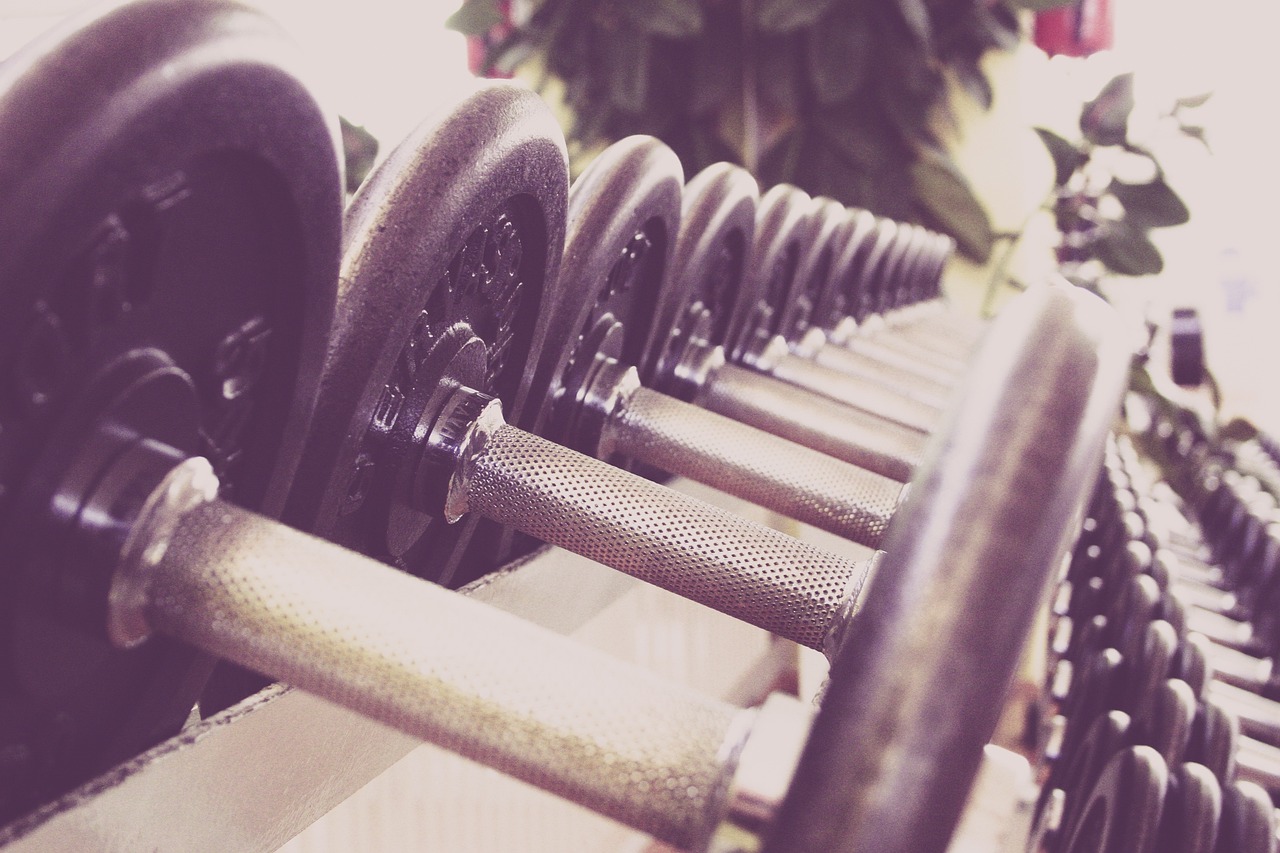
The Role of Visualization in Training
When it comes to enhancing your self-defense skills, visualization can be a game-changer. Imagine standing in front of a mirror, picturing yourself executing a perfect move, whether it’s a swift kick or a defensive block. This mental rehearsal isn’t just daydreaming; it’s a powerful technique that can significantly improve your performance. By vividly imagining yourself in various self-defense scenarios, you can prepare your mind and body to react instinctively when the real situation arises.
Visualization works by creating a mental blueprint of the actions you want to perform. Think of it as programming your brain for success. Just like an athlete visualizes their winning moment before a big game, you can visualize your self-defense techniques to build muscle memory and confidence. Studies have shown that mental practice can enhance physical performance, making it an essential tool in your training arsenal.
Moreover, visualization can help reduce anxiety and fear associated with self-defense situations. When you mentally rehearse a scenario, you’re effectively desensitizing yourself to the stress of the moment. This practice can transform your fear into focus, allowing you to respond more effectively when faced with a potential threat. It’s like having a secret weapon in your back pocket, ready to be deployed when needed.
To effectively incorporate visualization into your training routine, consider the following steps:
- Find a Quiet Space: Choose a calm environment where you can focus without distractions.
- Relax and Breathe: Take a few deep breaths to clear your mind and reduce tension.
- Visualize Specific Scenarios: Picture yourself in various self-defense situations, focusing on the details—what you see, hear, and feel.
- Practice Regularly: Make visualization a part of your training schedule, just like physical workouts.
As you engage in this mental practice, remember to be as detailed as possible. The more vivid the imagery, the more effective the visualization will be. Imagine the colors, sounds, and even the emotions you might experience. This immersive approach not only prepares you for the physical demands of self-defense but also fortifies your mental resilience.
In summary, the role of visualization in training is not merely a supplementary technique; it’s an integral part of developing a robust self-defense strategy. By harnessing the power of your mind, you can enhance your physical capabilities, boost your confidence, and ultimately become more adept at defending yourself. So, the next time you train, take a moment to visualize your success—your future self will thank you for it!
Q1: How often should I practice visualization for self-defense?
A1: Ideally, you should incorporate visualization into your training routine several times a week. Just a few minutes of focused mental rehearsal can make a significant difference.
Q2: Can visualization replace physical training?
A2: While visualization is a powerful tool, it should complement, not replace, physical training. Both mental and physical practices are essential for effective self-defense.
Q3: What if I find it difficult to visualize?
A3: If visualization feels challenging, start with simpler scenarios and gradually work your way up. You can also use guided imagery techniques or apps that help you focus.
Q4: Does visualization work for everyone?
A4: While many people find visualization effective, individual results may vary. It’s important to experiment and see what works best for you.

Building Confidence through Mental Training
Building confidence is a crucial aspect of enhancing your self-defense capabilities. It's not just about having the physical strength to defend yourself; it's also about feeling empowered and prepared to face any situation. Mental training can significantly contribute to this sense of confidence. Have you ever noticed how athletes visualize their performance before a big game? This technique isn’t just for sports; it can be a game-changer in self-defense scenarios too.
One effective method to boost your confidence is through visualization. By mentally rehearsing self-defense techniques, you can create a mental blueprint of how you would react in various situations. Imagine yourself successfully defending against an attacker, feeling strong and in control. This mental practice can help reduce anxiety and improve your reaction time when faced with real-life threats. It’s like training your brain to respond positively under pressure, which can make all the difference when adrenaline kicks in.
Moreover, incorporating mindfulness techniques into your routine can enhance your mental resilience. Mindfulness helps you stay present and focused, reducing the likelihood of panic in stressful situations. By practicing mindfulness, you can train your mind to remain calm and collected, allowing you to assess your surroundings and respond effectively. This is vital because a clear mind can often find the best escape route or the most effective defensive move when things get chaotic.
Another useful strategy is positive self-talk. The way you speak to yourself can shape your confidence levels. Instead of letting negative thoughts creep in, replace them with affirmations that reinforce your abilities. For instance, telling yourself, “I am strong, capable, and prepared” can significantly shift your mindset. It’s like having your own personal cheerleader, reminding you of your strengths and potential.
To further solidify your confidence, consider setting achievable goals related to your self-defense training. Start with small milestones, such as mastering a specific technique or improving your physical fitness. Each time you achieve a goal, no matter how small, it builds your confidence and reinforces the idea that you can defend yourself. Remember, confidence is built through experience and success, so celebrate your progress along the way!
In summary, building confidence through mental training is a multifaceted approach that includes visualization, mindfulness, positive self-talk, and goal-setting. These techniques work together to create a strong mental foundation, allowing you to feel empowered and ready to handle any situation. So, the next time you’re preparing for self-defense training, remember that your mind is just as important as your body. Cultivating a confident mindset can be the key to unlocking your full potential in self-defense.
- How long does it take to build confidence through mental training? Building confidence is a gradual process, and it varies for each individual. Consistent practice of mental techniques can lead to noticeable improvements in a few weeks.
- Can visualization really help in real-life self-defense situations? Yes! Visualization helps your brain prepare for real-life scenarios, making it easier to react effectively when faced with a threat.
- What are some quick mindfulness techniques I can use? Simple techniques include deep breathing exercises, focusing on your senses, or practicing gratitude to help center your thoughts and reduce anxiety.
Frequently Asked Questions
- What is the best way to increase my physical strength for self-defense?
The best way to increase physical strength for self-defense is to implement a combination of strength training regimens that include bodyweight exercises, resistance training, and functional movements. Exercises like push-ups, squats, and lunges are foundational, while incorporating weights or resistance bands can further enhance muscle power.
- How important is nutrition in building strength for self-defense?
Nutrition plays a vital role in building strength for self-defense. Consuming a balanced diet rich in essential nutrients, such as proteins, vitamins, and minerals, supports muscle growth and recovery. Additionally, staying hydrated is crucial for maintaining optimal performance during training.
- Can mental strategies really improve my self-defense skills?
Absolutely! Mental strategies like visualization and mindfulness can significantly enhance your self-defense skills. By mentally rehearsing scenarios, you can boost your confidence and prepare your mind for real-life situations, making you more effective when it matters most.
- How often should I train to maximize my strength for self-defense?
To maximize your strength for self-defense, aim for a structured training routine that includes strength training at least 3 to 4 times a week. This should be complemented by cardiovascular exercises and flexibility training to ensure overall fitness and readiness.
- Are there specific exercises that are better for self-defense?
Yes, certain exercises are particularly beneficial for self-defense. Bodyweight exercises like push-ups, pull-ups, squats, and lunges help build functional strength. Additionally, resistance training with weights or bands can enhance your power, making you more capable of defending yourself in various situations.
- What role does hydration play in strength training for self-defense?
Hydration is crucial for optimal performance in strength training. Proper hydration helps maintain energy levels, improves endurance, and aids in recovery. When you're well-hydrated, your muscles function better, allowing you to train harder and more effectively for self-defense.
- How can I build confidence in my self-defense abilities?
Building confidence in your self-defense abilities can be achieved through consistent practice, mental training, and positive reinforcement. Engaging in regular self-defense classes, visualizing successful outcomes, and celebrating small victories can all contribute to a stronger sense of self-assurance.

